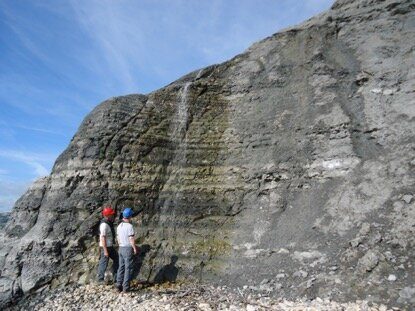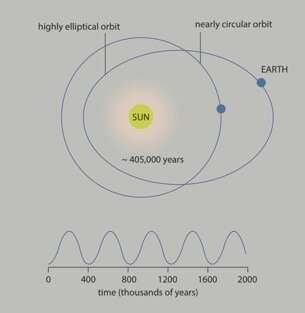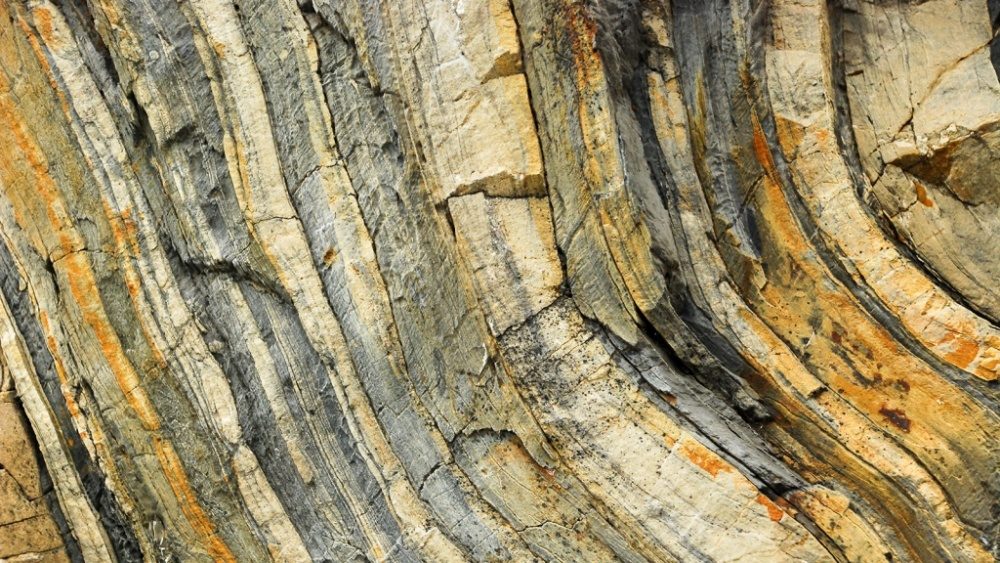Comment: This opening comment reflects just how science is at the mercy of the global warming agenda, because it is not only irrelevant to the article but is also refuted by the actual findings.
However, new research publishing this week in leading international journal PNAS, sheds fresh light on the complicated interplay of factors affecting global climate and the carbon cycle — and on what transpired millions of years ago to spark two of the most devastating extinction events in Earth's history.
Using chemical data from ancient mudstone deposits in Wales, an international team involving scientists from Trinity College Dublin discovered that periodic changes in the shape of Earth's orbit around the Sun were partly responsible for changes in the carbon-cycle and global climate during and in between the Triassic-Jurassic Mass Extinction (around 201 million years ago, when around 80% of the species on Earth disappeared forever) and the Toarcian Oceanic Anoxic Event (around 183 million years ago).

Dr. Micha Ruhl, Assistant Professor in Sedimentology at Trinity, said:
"Our work shows that for the 18 million years or so in between the Triassic-Jurassic mass extinction and the Toarcian Oceanic Anoxic Event, Earth's global carbon-cycle was in a constant state of change."

"Although this phenomenon is well known for having caused the glacial cycles in more recent times, the present study shows that these external forcing mechanisms on Earth's systems were also operating, and controlling Earth's carbon cycle in the distant past, even during non-glacial times when Earth was marked by hot-house climate conditions."
Present-day orbital configurations and solar system processes should have resulted in a future return to glacial conditions. However, anthropogenic carbon release will likely have disrupted this natural process, causing rapid global warming, rather than a steady return to cooler climates.
The study of past global change events, such as the end-Triassic mass extinction and the Toarcian Oceanic Anoxic Event, as well as the time in between, allows scientists to disentangle the different processes that control global carbon cycle change and constrain tipping points in Earth's climate system.
A major international research team, made up of scientists from across Europe, North and South America and China, and including Dr. Micha Ruhl and other researchers from Trinity, will soon commence drilling a 1 km deep borehole to retrieve rock samples.
These samples will comprise detailed climatic and environmental information and allow for further improved understanding of the processes that led to past major global change events and mass extinctions. Drilling of this borehole will occur as part of the International Continental Drilling Program.
More information: Marisa S. Storm el al., "Orbital pacing and secular evolution of the Early Jurassic carbon cycle," PNAS (2020). www.pnas.org/cgi/doi/10.1073/pnas.1912094117 Journal information: Proceedings of the National Academy of Sciences




In light of the cold and wild winters we've had the last few years, shouldn't we be celebrating this? If people have made a difference to the climate - of which I'm not convinced - all we've done is bought ourselves a little time before the next ice age, the approach of which seems inevitable. Too bad many of us are wasting the days before the Big Freeze with juvenile control fantasies of global warming. Personally, I think every sunny day should be a Party Day.